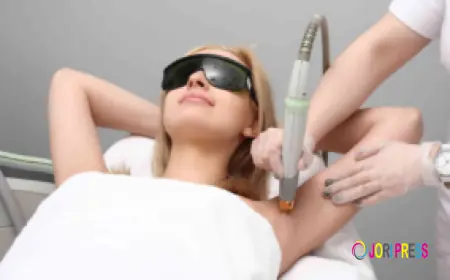From Lab to Life: Global Genetic Engineering Market Forecast

The global genetic engineering market is transforming the fields of medicine, agriculture, and industrial biotechnology by enabling precise manipulation of genetic material. Genetic engineering, also known as genetic modification or gene editing, involves altering the DNA of organisms to achieve specific traits or outcomes. This includes techniques such as CRISPR, TALENs, and zinc finger nucleases, which allow for targeted genetic changes with high precision.
As ethical and regulatory frameworks evolve alongside technological breakthroughs, genetic engineering is expected to play an increasingly central role in addressing global challenges in health, food security, and sustainability.
Market Overview
Genetic engineering has progressed from basic recombinant DNA techniques to sophisticated genome editing tools that can modify specific genes with high accuracy. In healthcare, gene editing holds promise for treating genetic disorders, cancers, and rare diseases. In agriculture, genetically modified crops offer higher yields, pest resistance, and climate adaptability.
The market includes tools and reagents used for genetic modification, services for gene editing and analysis, and engineered products such as GMOs, gene therapies, and biomanufactured compounds. The rapid adoption of CRISPR-Cas9 and the emergence of synthetic biology platforms are revolutionizing the speed, cost, and scale at which genetic manipulation can be performed.
With increased funding from public and private sectors, expanding research pipelines, and rising demand for genetically engineered solutions, the global genetic engineering market is entering a high-growth phase.
Click here to download a sample report
Key Market Drivers
- Advances in Gene Editing Technologies
The development of CRISPR and other precision-editing tools has significantly improved the accuracy, efficiency, and affordability of genetic engineering. - Growing Prevalence of Genetic Disorders and Chronic Diseases
Demand for personalized medicine and gene-based therapies is rising globally. - Increased Agricultural Demand and Food Security Concerns
Genetically modified crops are being developed to address environmental stress, pest resistance, and yield optimization. - Expansion of Synthetic Biology
Engineered microorganisms are being used to produce biofuels, enzymes, vaccines, and pharmaceuticals. - Rising R&D Investments and Government Support
Numerous national genomics initiatives and biotech funding programs are accelerating market growth.
Market Segmentation
By Technology:
- CRISPR-Cas9
The most widely adopted gene-editing technology for its simplicity, accuracy, and versatility. - TALENs (Transcription Activator-Like Effector Nucleases)
Used for targeted DNA binding and cutting in specific genomic regions. - Zinc Finger Nucleases (ZFNs)
An earlier generation of gene-editing tools used for targeted modifications. - Recombinant DNA Technology
Classic technique used for inserting genes into plasmids and organisms for protein production or trait expression. - Others
Includes gene silencing, antisense technology, and gene drive systems.
By Application:
- Medical and Healthcare
Gene therapy, regenerative medicine, personalized medicine, and drug development. - Agriculture
Genetic modification of crops for pest resistance, drought tolerance, and improved nutrition. - Industrial Biotechnology
Engineering microbes for biofuel production, enzyme synthesis, and biodegradable plastics. - Research and Development
Academic and commercial research focused on gene function, expression, and editing.
By End User:
- Biotechnology and Pharmaceutical Companies
Leading in developing gene therapies, engineered biologics, and genome-based diagnostics. - Academic and Research Institutions
Engaged in basic genetic research and early-stage technology development. - Agricultural and Food Companies
Using genetic engineering to create GM seeds and improve animal genetics. - Contract Research Organizations (CROs)
Providing specialized services in gene editing, testing, and preclinical studies.
Regional Insights
North America
Leads the global market due to advanced healthcare infrastructure, robust R&D funding, and a strong presence of biotech companies. The U.S. is at the forefront of gene therapy development and CRISPR innovation.
Europe
Strong research ecosystem and growing adoption of genetic engineering in agriculture and pharma. Countries like Germany, the U.K., and France are key contributors, though regulatory frameworks are stricter for GMOs.
Asia-Pacific
Rapidly expanding market driven by increasing biotechnology investment in China, Japan, South Korea, and India. Strong agricultural and healthcare applications are propelling demand.
Latin America
Growing adoption of genetically modified crops and rising interest in gene editing technologies in Brazil and Argentina.
Middle East & Africa
Emerging market with potential in agricultural biotechnology and genetic research partnerships.
Competitive Landscape
The genetic engineering market is highly competitive and innovation-driven, with leading biotechnology and pharmaceutical companies collaborating with academic institutions and startups.
Strategic Focus Areas:
- Product Innovation and Platform Development
New gene editing kits, enzymes, and delivery systems are expanding technical capabilities. - Collaborations and Licensing Deals
Partnerships are facilitating access to proprietary gene-editing tools and therapeutic pipelines. - Expansion of Clinical Trials and Therapeutic Applications
Companies are advancing gene therapies through clinical stages across rare diseases, oncology, and infectious diseases. - Agricultural Biotechnology Expansion
Development of genetically engineered seeds and gene-edited crops tailored to regional climates. - Investment in Scalable Manufacturing
Biotech firms are investing in facilities to support commercial production of engineered biologics and therapies.
Technological & Product Trends
- Next-Generation Gene Editing Platforms
Innovations such as base editing and prime editing offer even more precise DNA modifications. - In Vivo vs. Ex Vivo Gene Editing
Technologies are being tailored for direct in-body editing versus laboratory-based cell modification. - Gene Therapy Vectors and Delivery Systems
Development of viral and non-viral delivery methods for efficient gene transfer. - AI-Driven Genetic Engineering
AI and machine learning are accelerating target identification, design, and optimization of gene-editing constructs. - Portable and Point-of-Care Genetic Tools
Development of handheld gene editing platforms for field use in agriculture and diagnostics.
Challenges and Restraints
- Ethical and Regulatory Concerns
Germline editing, gene drives, and the long-term effects of gene editing raise significant ethical and legal challenges. - High Development Costs
Gene editing therapies and products require significant investment in R&D, facilities, and trials. - Limited Technical Expertise and Infrastructure
Developing countries often lack the infrastructure and skilled workforce to adopt advanced technologies. - Uncertain Public Perception
Concerns around GMOs and genetic manipulation can affect market acceptance and policy. - Intellectual Property Disputes
Patent battles, especially around CRISPR, continue to shape competitive dynamics and access.
Future Outlook (2024–2032)
The genetic engineering market is expected to experience sustained growth through 2032, driven by:
- Continued refinement of gene editing tools for precision, safety, and efficiency
- Expansion of gene therapy approvals and commercialization
- Integration of synthetic biology in industrial and environmental applications
- Growth of genome-based agriculture and food production systems
- Greater public-private partnerships and international research collaborations
As the technology matures and regulatory clarity improves, genetic engineering will play a vital role in tackling global challenges across healthcare, food, and sustainability.
Conclusion
The global genetic engineering market is at the forefront of a biological revolution. From rewriting the genetic code to solving some of the world’s most pressing problems in health and food security, genetic engineering offers unprecedented potential.
What's Your Reaction?
 Like
0
Like
0
 Dislike
0
Dislike
0
 Love
0
Love
0
 Funny
0
Funny
0
 Angry
0
Angry
0
 Sad
0
Sad
0
 Wow
0
Wow
0














































